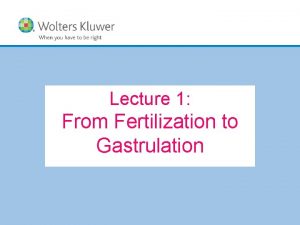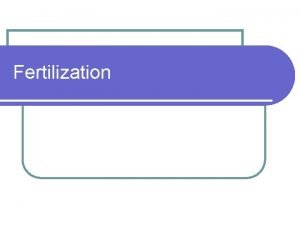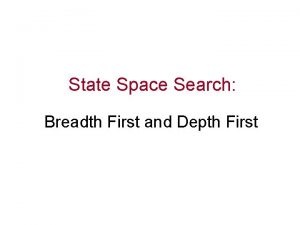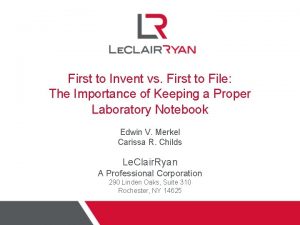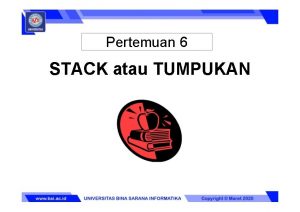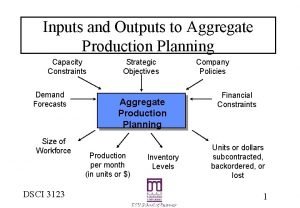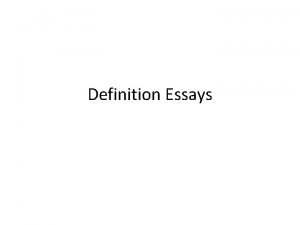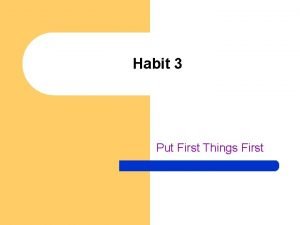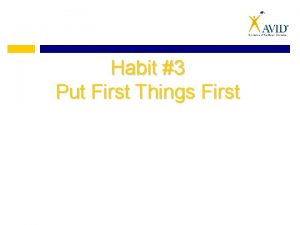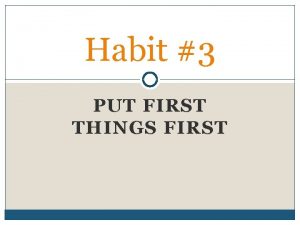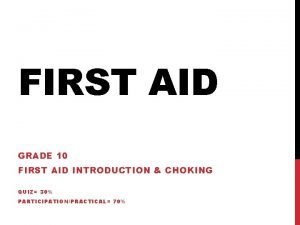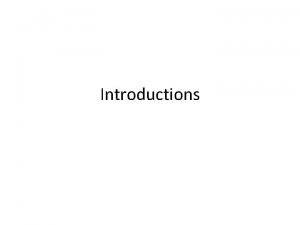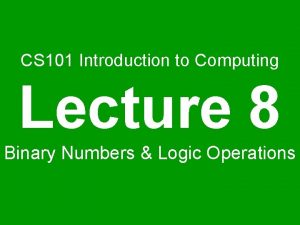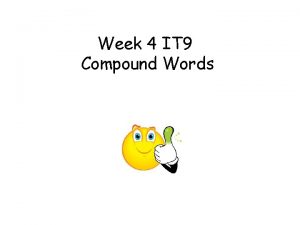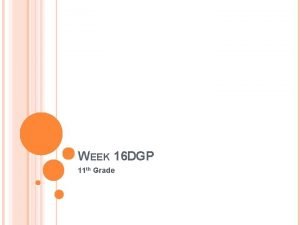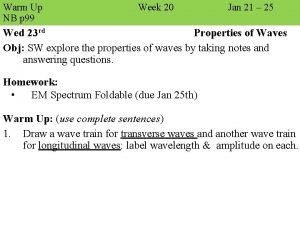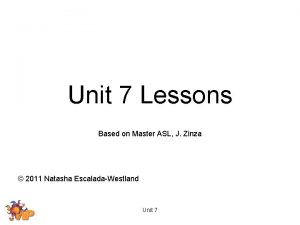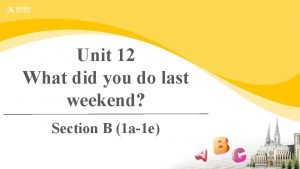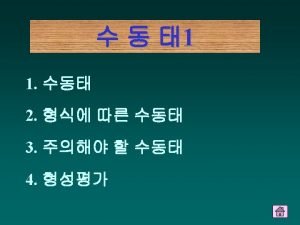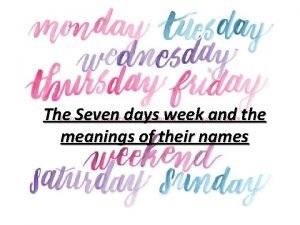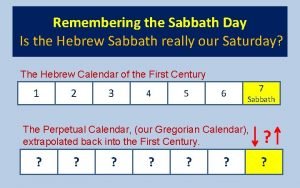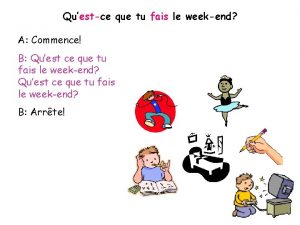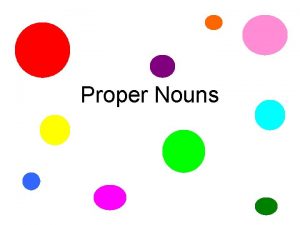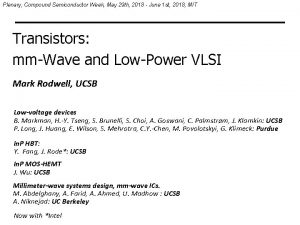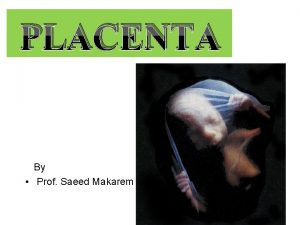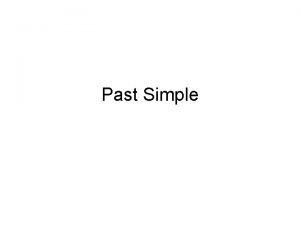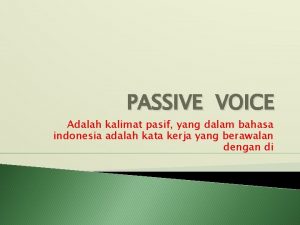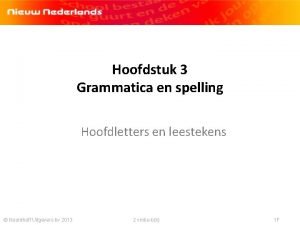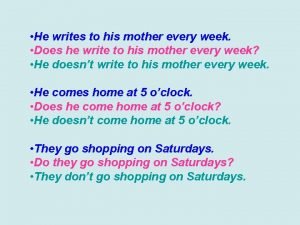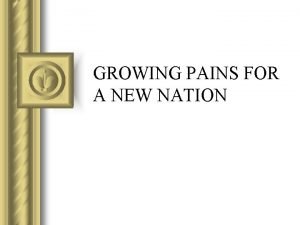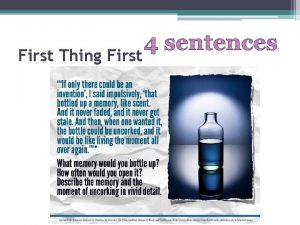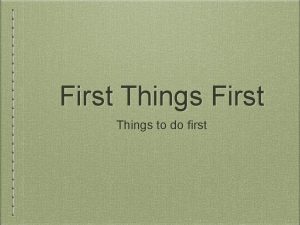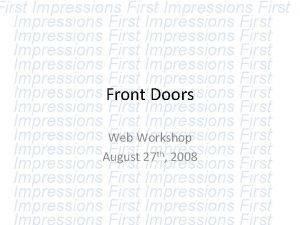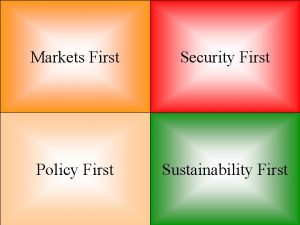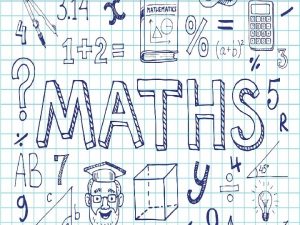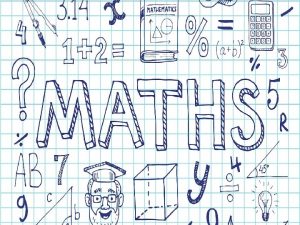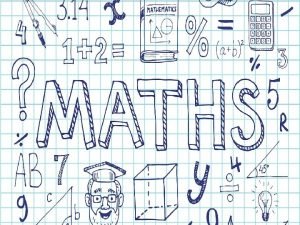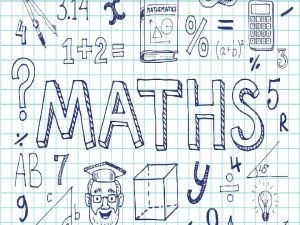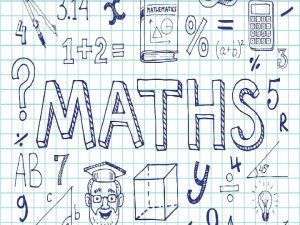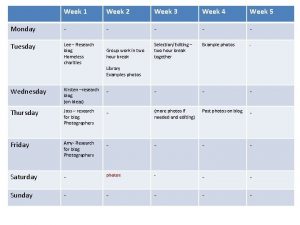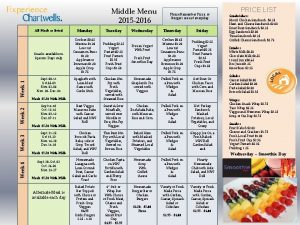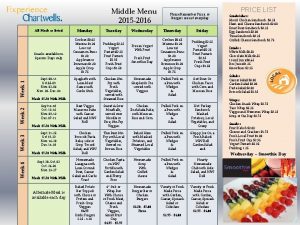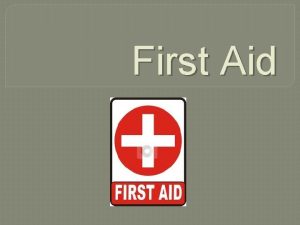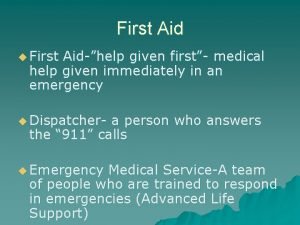Introduction week 2 Hi all First of all












































































- Slides: 76


Introduction- week 2 Hi all First of all I hope you are all still keeping safe, healthy and looking after yourselves. Now to the boring bit…. Work… My expectation…. I will be expecting you to be doing 5 hours of maths a week. This is no more than what you do in school so it should be relatively straight forward. Now this can be completed by doing an hour a day or spending a few hours on 2 or 3 days completing the entirety of the work, the choice is yours, however, I will be expecting the work to be completed. There will be 4 lessons of NEW CONTENT a week with the 5 th lesson having to complete questions on everything you’ve just learnt (Each lesson 1 hr long). There will be an instruction of how I expect these questions to be completed when you go to lesson 5. I will be providing you with lessons to go through and will be expecting each of you to take notes and answer any questions which are within the slides to help develop your understanding. The week will be topic based so lesson 1 will help with lesson 2 and 3 and so on, so PLEASE DO NOT skip slides. All the lessons will provide you with material on topics that we were yet to cover during your first year at LEEP. If you feel you get stuck or are confused please do not hesitate to contact me. I will be allocating every Wednesday for you to contact with any questions or concerns and will respond to them as soon as I can on the day. However if you have any questions outside of that day I will get back to you as soon as I possibly can. Email: s. rivera@leep. org. uk Please continue to look after yourselves and work hard to ensure we are not having to play catch up when we are back. Mr Rivera

Timetable: Monday – Lesson 1 material Tuesday – Lesson 2 material Wednesday – Lesson 3 material Thursday – Lesson 4 material Friday – Exam questions

Please look at these slides in full screen so you get all the content material. There a lot of slides but please take your time reading through them. Some slides are just additional bits of information for the previous slides so do not be daunted. Remember, if you have any questions you will be able to send an email to me. I will respond as soon as possible. Email: s. rivera@leep. org. uk

Lesson 1

31/10/2020 LOs. Surface Area of prisms • Find the surface area of cuboids. • Find surface area of prisms using triangles and rectangles

Starter Calculate the area of the shapes below! 4 mm 3 cm 4 mm 6 cm Area = 16 mm 2 Area = 18 cm 2 6 cm 7 m 6 cm Area = 18 cm 2 6 m Area = 21 m 2

NETS OF CUBES There are eleven different ways of sketching the nets of cubes. Most Common

Surface Area What types of shapes make up the faces of a cubes? 3 x 6 = 54 cm 2 3 cm Number of faces in a cube

Surface Area 5 cm Surface Area = 150 cm 2 7 cm Area = 294 cm 2 Surface

What about other 3 D shapes? Triangular Prism Square based pyramid

Surface area of a cuboid To find the surface area of a shape, we calculate the total area of all of the faces. A cuboid has 6 faces. The top and the bottom of the cuboid have the same area.

Surface area of a cuboid To find the surface area of a shape, we calculate the total area of all of the faces. A cuboid has 6 faces. The front and the back of the cuboid have the same area.

Surface area of a cuboid To find the surface area of a shape, we calculate the total area of all of the faces. A cuboid has 6 faces. The left hand side and the right hand side of the cuboid have the same area.

Surface area of a cuboid To find the surface area of a shape, we calculate the total area of all of the faces. 8 cm 5 cm Can you work out the surface area of this cuboid? The area of the top = 8 × 5 = 40 cm 2 7 cm The area of the front = 7 × 5 = 35 cm 2 The area of the side = 7 × 8 = 56 cm 2

Surface area of a cuboid To find the surface area of a shape, we calculate the total area of all of the faces. 8 cm 7 cm 5 cm So the total surface area = 2 × 40 cm 2 Top and bottom + 2 × 35 cm 2 Front and back + 2 × 56 cm 2 Left and right side = 80 + 70 + 112 = 262 cm 2

Formula for the surface area of a cuboid We can find the formula for the surface area of a cuboid as follows. l h w Surface area of a cuboid = 2 × lw Top and bottom + 2 × hw Front and back + 2 × lh Left and right side = 2 lw + 2 hw + 2 lh

Checkpoint – Find the surface area of this cuboid 10 cm 5 cm 4 cm 10 cm 4 cm 5 cm 4 cm Total Surface Area = 220 cm 2 10 cm

Surface Area • How many faces does this triangular prism have? 5 cm 4 cm 6 cm 10 cm

Surface Area • How many faces does this triangular prism have? 5 cm 4 cm 6 cm 10 cm

Surface Area • How many faces does this triangular prism have? 5 cm 4 cm 6 cm 10 cm

Surface Area • How many faces does this triangular prism have? 5 cm 4 cm 6 cm 10 cm

Surface Area • How many faces does this triangular prism have? 5 cm 4 cm 6 cm 10 cm

Surface Area • How many faces does this triangular prism have? 5 cm 4 cm 6 cm 10 cm

Surface Area A = 8 x 11 = 88 cm 2 C A Area B = 5 x 11 = 55 cm 2 B 11 cm 5 cm 8 cm Area C = 5 x 8 = 40 cm 2 TOTAL SURFACE AREA = (88 + 55 + 40) x 2 = 183 x 2 = 366 cm 2

Surface Area Calculate the Surface Area of the cube and cuboids shown below: SA = 294 cm 2 SA = 378 cm 2 7 cm 3 cm EXTENSION: SA = 270 cm 2 9 cm 6 cm 5 cm 12 cm 8 cm 15 cm

Surface Area of Triangles = ½ x 5 x 6 = 15 m 2 = 15 x 2 = 30 m 2 11 m 7 m 6 m 12 m 5 m Area of Rectangle 1 = 12 x 11 = 132 m 2 Area of Rectangle 2 = 5 x 12 = 60 m 2 Area of Rectangle 3 = 12 x 7 = 84 m 2 Total Surface Area = 30 + 132 + 60 + 84

Surface Area of Triangles = ½ x 3 x 6 = 9 m 2 = 9 x 2 = 18 m 2 Area of Rectangle 1 = 10 x 6 = 60 m 2 7 cm Area of Rectangle 2 = 7 x 10 = 70 m 2 3 cm 10 cm Area of Rectangle 3 = 3 x 10 = 30 m 2 6 cm Total Surface Area = 18+ 60 + 70 + 30 = 178 m 2

Area of Parallelograms = 9 x 7 = 63 cm 2 Surface Area of Prisms 7 cm 8 cm 11 cm 9 cm Area of Rectangles 1 = 11 x 9 = 99 cm 2 99 x 2 = 198 cm 2 Area of Rectangles 2 = 8 x 11 = 88 cm 2 88 x 2 = 176 cm 2 TOTAL SURFACE AREA = 63 + 198 + 176 = 437 cm 2

Surface Area of Prisms 6 cm 8 cm 7 cm TOTAL SURFACE AREA = 56 + 128 + 160 + 128 + 96 2 = 568 cm 16 cm Area of Trapeziums = ½ (10 + 6) x 7 10 cm = ½ x 16 x 7 = 56 cm 2 Area of Rectangle 1 = 16 x 8 Area of Rectangle 2 = 10 x 16 = 128 cm 2 = 160 cm 2 Area of Rectangle 3 = 16 x 8 Area of Rectangle 4 = 6 x 16 = 128 cm 2 = 96 cm 2 8 cm

Lesson 2

Volume of prisms 31/10/2020 I will be able to… • How is volume defined? • How to find the volume of a cuboid and prisms Starter: Find the area of these shapes 1 2 9 cm 12 c m 8 cm 3 14 c m 20 c m 18 c m 12 c m 14 c m ext 18 c m 14 c m 22 c m

Volume The volume is the measure of the amount of space occupied by a 3 Dimensional object, measured in “cubic” units. 1 1 1

Volume The volume is the measure of the amount of space occupied by a 3 Dimensional object, measured in “cubic” units. 1 1 1 5 1 1

Volume The volume is the measure of the amount of space occupied by a 3 Dimensional object, measured in “cubic” units. 1 1 2 cm 6 cm 1 1

Volume The volume is the measure of the amount of space occupied by a 3 Dimensional object, measured in “cubic” units. 1 1 3 cm 4 cm 6 cm 1 1

Volume The volume is the measure of the amount of space occupied by a 3 Dimensional object, measured in “cubic” units. 1 1 We can work out the volume of the cuboid by dividing up the cuboid into layers Made up of 4 layers – each layer has: 3 cm 6 cm

Volume The volume is the measure of the amount of space occupied by a 3 Dimensional object, measured in “cubic” units. 1 1 General formula: h l w lxwxh 1 1

Volume of a prism height width length Volume = length x width x height

Volume of Prisms 12 cm Volume = width x height x depth V = 4 x 3 x 12 3 cm 4 cm V = 144 cm 3

Volume of a prism What is the volume of a cuboid with dimensions 10 cm, 8 cm and 5 cm 10 cm 8 cm Area of cross-section = 10 cm x 8 cm = 80 cm 2 Volume of prism = area of cross-section x height = 80 cm 2 x 5 cm = 400 cm 3


What shape is the crosssection?

What shape is the crosssection?

What shape is the crosssection?

9 cm 5 cm 2

5 cm 8 cm 2

4 cm 6 cm 2

Find the volume of this prism Cross-section is a triangle 4 14 cm cm Area of cross-section = ½ x 5 x 4 = 10 cm 2 5 cm Volume of prism = area of cross-section length x height Volume of prism = 10 x 14 = 140 cm 3

Find the volume of this prism Cross-section is a parallelogram 7 cm 6 cm 15 cm Area of cross-section = 6 x 7 = 42 cm 2 Volume of prism = area of cross-section length x height Volume of prism = 42 x 15 = 630 cm 3


Lesson 3

31/10/2020 Converting units of area and I will be able to… • Convert between metric measures of volume • Use volume to solve problems Starter Convert the following: 3 m = ____cm 450 m = ____km 93 cm = ____m 9 km = ____m Convert the following: • 5 kg = ____g • 9352 g = ____kg • 2. 5 g = ____mg • 20500 mg = ____g • 70 g = ___kg

Convert the following: Extension: 3 m = 300 cm Convert the following: 450 m = 0. 45 km • 5 kg = 5000 g 93 cm =0. 93 m • 9352 g = 9. 352 kg 9 km = 9000 m • 2. 5 g =2500 mg 3. 7 cm = 37 mm • 20500 mg = 20. 5 g • 70 g = 0. 07 kg

Definitions Area is measured in units squared (e. g. m 2, cm 2, mm 2) To convert between different units of area, multiply or divide by the square of the ‘length’ conversion factor. Volume is measured in units cubed (e. g. m 3, cm 3, mm 3) To convert between different units of volume, multiply or divide by the cube of the ‘length’ conversion factor.

Area Consider a square that is 1 cm by 1 cm. It has an area of 1 cm 2. What is it’s area in mm 2? 1 cm 2 = 100 mm 2 1 cm 10 mm ? A = 1 cm 2 A = 100 mm 2 1 cm 10 mm

Area Using the logic, can you work out the rate of conversion from m 2 to cm 2? 1 m 2 = 10000 cm 2 1 metre= 100 cm Therefore 100 cm x 100 cm = 10000 cm 2

Example 1: Convert an area of 0. 06 m 2 to cm 2 Step 1: Work out the conversion factor from cm 2 to m 2 1 m = 100 cm, So 1 m 2 = 100 x 100 = 10, 000 cm 2 Step 2: Multiply by the conversion factor 0. 06 m 2 = 0. 06 x 10, 000 = 600 cm 2 Example 2: Convert a volume of 382, 000 cm 3 to m 3 Step 1: Work out the conversion factor from cm 3 to m 3 1 m = 100 cm, So 1 m 3 = 100 x 100 = 1, 000 cm 3 Step 2: Divide by the conversion factor 382, 000 cm 3 = 382, 000 ÷ 1, 000 = 0. 382 m 3

Lesson 4

31/10/2020 Cylinders and pyramids Learning objectives: • Find volume and SA of a cylinder • Recall and use the formula for volume of pyramid. STARTER 1) Write down the circumference of a circle formula 2) Write down the 3) area of a circle formula 10 cm Calculate the area of the circle 4) 200 m Calculate the area of the circle

VOLUME OF CYLINDERS VOLUME OF A CYLINDER = AREA OF CIRCLE X LENGTH EXAMPLES 1) 2) 16 m 18 m 6 cm 15 cm Calculate the volume of the cylinder x 6 x 15 Volume of a cylinder = x 8 x 18 Volume of a cylinder = 31/10/2020 (1 d. p. )

VOLUME OF CYLINDERS NB: 3. 14 as pi Calculate the volume for each of the cylinders to 2 d. p. below: 1) 2) 3) 6) 5) 4) 31/10/2020

PLT Skills VOLUME OF CYLINDERS MINI-PLENARY Which ones are you using? A metal bar is 1 m long and has a diameter of 6 cm. What is the volume of the metal bar? METAL BAR 3 cm 100 cm x 3 x 100 Volume of metal bar = 31/10/2020

h Volume of a pyramid = 1 x base area x height 3 Base area = 7 x 4 = 28 cm² Volume of pyramid = 1 x 28 x 6 3 = 56 cm³

RED 1) GREEN 2) AMBER 1) 2) Square base The pyramid in the diagram has its top 5 cm cut off as shown. The shape which is left is called a frustum. Calculate the volume of the frustum.

Answers 1) 168 cm³ 2) 84 cm³ 1) 45 m³ 2) 21 cm³ 260 cm³

Surface Area of a Cylinder Circumference = 2 r or d Height (h) d h Surface area of curved part of cylinder = x d x h

Area of top circle = r² Surface area of curved part of cylinder = d h Area of bottom circle = r² Total Surface Area of a Cylinder = d h + 2 r²

Calculate the total surface area of the cylinder: Total Surface Area of a Cylinder = d h + 2 r² 4 cm 6 cm Surface Area = ( x 4 x 6) + (2 x x 2²) = 24 + 8 = 32 = 100. 5 cm 2 (to 1 d. p. )

Calculate the total surface area of the cylinder: Total Surface Area of a Cylinder = d h + 2 r² 8 cm 10 cm Surface Area = ( x 8 x 10) + (2 x x 4²) = 80 + 32 = 112 = 351. 9 cm³ (to 1 d. p. )

t s e o i s i v e R u Q n s n io

Questions with answers Please complete all the questions. If you leave a question use another colour pen to ensure you highlight this as an area to work on. Do not look at the answers until all questions are complete on each individual slide. Look through the lesson slides to complete the questions you didn’t know. Check answers and make changes with another colour pen.

1. 5. 2. 6. 4. 3. 7. 8. 9. Katy wants to wrap a present that is 15 cm wide, 18 cm deep and 4 cm high. How much wrapping paper will she need to use? 10. A length of copper piping is in the shape of a triangular prism. The triangle on it’s end is 9 mm tall, 4 mm wide. The piece of pipe is 18 cm long. What is the surface area of the pipe? 11. A box has no lid. The box measures 1. 2 m by 30 cm by 45 cm. What is the surface area of the outside of the box?


Convert each of these measurements into the units given. 1) 84 mm 2 into cm 2 0. 84 cm 2 2) 1750 cm 2 into m 2 0. 175 m 2 3) 29, 000 mm 2 into cm 2 290 cm 2 4) 3, 150, 000 m 2 into km 2 3. 15 km 2 5) 8500 mm 2 into cm 2 85 cm 2 6) 1700 cm 2 into m 2 0. 17 m 2 1) 0. 001 km 3 into m 31 million m 3 2) 15 cm 3 into mm 3 15000 mm 3 3) 0. 2 m 3 into cm 3 200, 000 cm 3 4) 0. 435 km 3 into 435 m 3 million m 3 5) 6. 7 km 3 into m 36. 7 billion m 3 6) 0. 000045 cm 3 into mm 3 0. 045 mm 3 1) Sandeesh wants to carpet 2 rectangular rooms. One of the room measures 1. 7 m by 3 m, while the other is 670 cm by 420 cm. How many square metres of carpet will she need? 33. 24 m 2 2) A swimming pool measures 3 m deep and has a base with area 375 m 2 a) Find the volume of the pool in cm 3. 1. 125 billion cm 3 b) How many litres of water can the pool hold? 1, 125, 000 litres

PLENARY ACTIVITY EXAM QUESTION (non-calculator) Volume of a cylinder = x 8 x 5 Volume of a cylinder = 31/10/2020
 Week by week plans for documenting children's development
Week by week plans for documenting children's development First week of development
First week of development Phase of fertilization
Phase of fertilization Now upon the first day of the week
Now upon the first day of the week Name 3 points
Name 3 points Stages of maturity 7 habits
Stages of maturity 7 habits State space search
State space search Sdl first vs code first
Sdl first vs code first Put first things first activities
Put first things first activities Put first things first
Put first things first Entity framework 7 release date
Entity framework 7 release date First to file vs first to invent
First to file vs first to invent Data structure stack
Data structure stack C++ stack vs heap
C++ stack vs heap First in first out
First in first out First come first serve
First come first serve Put first things first definition
Put first things first definition Gantt chart first come first serve
Gantt chart first come first serve 7 habits introduction
7 habits introduction Habit number 3
Habit number 3 Put first things first video
Put first things first video Habit 3 activities
Habit 3 activities First aid merit badge first aid kit
First aid merit badge first aid kit Three ps in first aid
Three ps in first aid Put first things first
Put first things first First part of introduction
First part of introduction Tertiary food web
Tertiary food web First of all thanks to allah
First of all thanks to allah I urge you first of all to pray
I urge you first of all to pray In binary search first of all value check at a point cs101
In binary search first of all value check at a point cs101 Body paragraph structure
Body paragraph structure Htcondor week
Htcondor week Htcondor vs slurm
Htcondor vs slurm Ana ascenção e silva
Ana ascenção e silva Dgp week 11
Dgp week 11 The girl who sits behind rafael is a better student than i
The girl who sits behind rafael is a better student than i Compound words with coat
Compound words with coat Dgp sentences
Dgp sentences Week 12 dgp
Week 12 dgp Dgp week 30
Dgp week 30 Dgp week 20 answers
Dgp week 20 answers Tv turn off week
Tv turn off week Spatial organization asl
Spatial organization asl How was your last weekend?
How was your last weekend? Weekend
Weekend Days of the week kanji
Days of the week kanji The kind has broken the window
The kind has broken the window Frīgedæg
Frīgedæg Angel articles collegeeducated class the week
Angel articles collegeeducated class the week Inductive vs deductive learning
Inductive vs deductive learning Cfnc free application week
Cfnc free application week Stem person of the week
Stem person of the week Sats week
Sats week April 6 32ad calendar
April 6 32ad calendar Cite quelque chose que tu fais le week end
Cite quelque chose que tu fais le week end Book a common noun
Book a common noun Compound semiconductor week
Compound semiconductor week Types of placenta ppt
Types of placenta ppt Personal fitness merit badge requirements
Personal fitness merit badge requirements They play football yesterday
They play football yesterday The court will try the case next week
The court will try the case next week Holy week timeline
Holy week timeline A company manufactures and sells x cellphones per week
A company manufactures and sells x cellphones per week Greek or latin root/affix for deci
Greek or latin root/affix for deci Last weekend i went to my friend's birthday party
Last weekend i went to my friend's birthday party 2 week dating challenge
2 week dating challenge 40-hour work week schedule examples
40-hour work week schedule examples 1 week darkening areola early pregnancy pictures
1 week darkening areola early pregnancy pictures Hyde amendment
Hyde amendment Leestekens schema
Leestekens schema Welcome to holy week
Welcome to holy week Learning outcomes of holy week
Learning outcomes of holy week Holy week objectives
Holy week objectives He writes to his mother every week
He writes to his mother every week Growing pains for the new nation
Growing pains for the new nation Greek week themes
Greek week themes Ponderal index in iugr
Ponderal index in iugr

